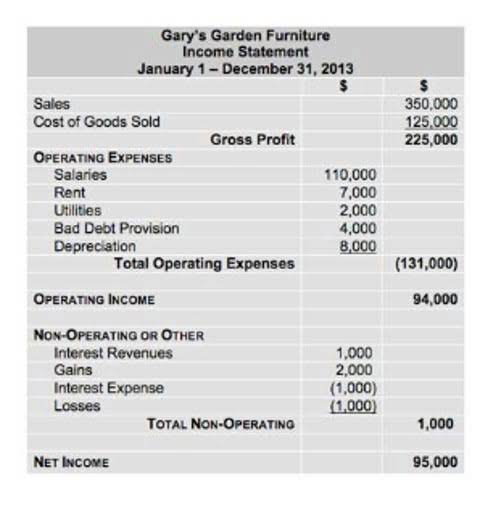What is the difference between bi-monthly and bi-weekly payments?
- huyenvu
- June 4, 2021
- 12:00 pm
Table of Contents
A biweekly payroll schedule will typically be seen in the eyes of your employees as “dependable” and “consistent”. Also, your payroll clerk will be able to keep a consistent schedule and pace with how they distribute them. The one downside to biweekly payments is the inconsistency in how much money you are paying out each month. There will always be a couple of months where you will have three paydays instead of two. It will be up to you and your accountant to retained earnings balance sheet make sure you will have enough to cover the extra payout.
Bi-weekly vs weekly pay periods
- As a result, they feel they have more control over their own money and are less likely to face financial hardship throughout the month.
- Biweekly can mean both every two weeks and twice a week, leading to biweekly vs semiweekly difference confusion.
- If the chosen payday is Friday, employees will receive their paychecks every other Friday, totaling 26 paychecks for the year.
- In this article, we’ll break down the pros and cons of each payroll type, key differences, and factors to consider when choosing the best option for your business and employees.
- With biweekly payments, you’re making 26 total payments across the year — essentially thirteen months of payments instead of 12.
Compared to biweekly payments, you’ll pay more interest over the life of your home loan. This is true regardless of whether your mortgage rate is low, fixed https://www.bookstime.com/ or adjustable. While making 12 payments per year may be simpler, you may pay more for your house than you have to. This article looks at how mortgage payments work, how to pay your mortgage and the pros and cons of monthly versus biweekly mortgage payments.
Are there fees associated with setting up biweekly payments?
This information is outlined in the loan terms you signed when you initially took out the mortgage. Not all lenders will allow you to make biweekly payments, so you’ll need to contact yours bimonthly vs biweekly to be sure they do. This calculator will help you to compare the costs between a loan that is paid off on a bi-weekly payment basis and a loan that is paid off on a monthly basis.
- This can be beneficial for workers who typically live paycheck to paycheck.
- Since most months are slightly longer than four weeks, biweekly mortgages that are paid every two weeks result in 26 payments throughout the year.
- On a $400,000 loan with a 6.5% rate, you’d save over $121,000 by making payments biweekly instead of monthly.
- Don’t worry, you’re not going crazy, you just haven’t fully grasped the semi-monthly vs. bi-weekly payroll debate yet.
- When you start paying back your loan payments, on longer loans (such as mortgages) the majority of your monthly payments will be interest.
What are biweekly mortgage payments?
Instead of making one large payment once a month, you make two smaller payments every other week. Semi-monthly pay occurs twice a month, typically on fixed dates (such as the 1st and 15th), resulting in 24 payments per year. Bi-weekly pay is every two weeks, totaling 26 payments annually, leading to slightly smaller but more frequent paychecks. An e-commerce store specializing in natural and organic skincare products operates with a traditional monthly billing cycle. However, they face challenges in maintaining a consistent cash flow and customer retention.
- Biweekly pay means that workers get paid every other week, often on the same day of the week—every other Friday, for example.
- There’s also weekly, which has the same payday every week, and monthly, which pays on the same date each month.
- While each payment is equal to half the monthly amount, you end up paying an extra month per year with this method.
- One drawback to biweekly mortgage payments is that some lenders may charge fees to enroll in their biweekly payment plan.
- Semi-monthly payments are made on specific dates, adding predictability but with fewer occurrences annually than bi-weekly payments, which fall consistently on the same day of the week.
- Bi-monthly pay schedules have fluctuating pay dates, while bi-weekly pay schedules usually pay on the same day of the week, often on Fridays.
Employee preferences also play a crucial role in determining pay schedules. The best payroll frequency is one that provides your employees with peace of mind and reduces the administrative burden of payroll management for your HR professionals. For a business that pays many of its employees on an hourly basis, that may mean a bi-weekly payroll schedule. For organizations with mostly salaried employees and additional payroll reporting requirements, bi-monthly may make more sense.
Payroll Processing
- And if you want an easy way to assign a payroll method to a special department or employee, you should try TalentHR.
- Some lenders won’t accept them at all, and others will hold them until you’ve sent in enough for a full payment.
- The terms “bi-weekly” and “semi-monthly” are often mistaken for one another, so let’s break down of each schedule type.
- Bi-weekly pay schedules are the most common, especially in the United States due to state laws.
- To address this issue, many companies turn to alternative schedules, such as bi-weekly, semi-monthly, or bi-monthly payments, to manage their cash flow better.
However, the state also stipulates that childcare workers have the right to opt for a bi-weekly pay period. In addition to size, industry also can have a major impact on how often businesses choose to pay their employees. For example, construction companies are five times as likely to use weekly pay periods as education and health care companies. There are 52 weeks in the year, which means that on a biweekly payment plan, you would make 26 payments per year. However, there are only 12 months in the year, and if you were making two payments each month, you would only be making 24 payments a year.






